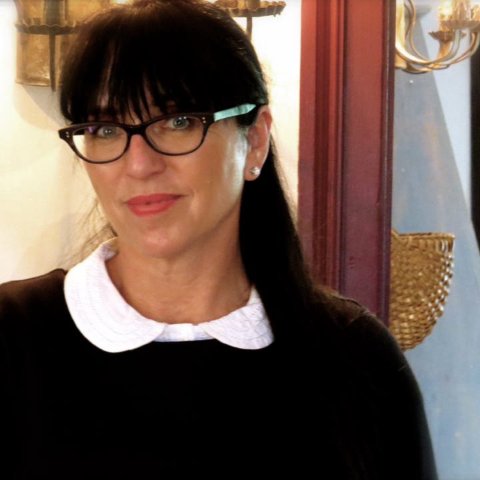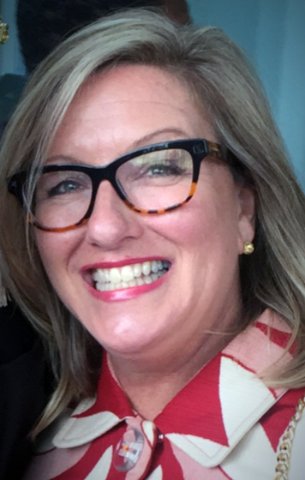Hancock Shaker Village New Staff Positions
Linda Johnson as Curator and Brenda Lynch as Director of Development
By: Shaker - Mar 12, 2021
Hancock Shaker Village, one of the most comprehensively interpreted Shaker sites in the U.S. and the oldest working farm in Western Massachusetts, announced today the appointments of Linda Johnson as Curator and Brenda Lynch as Director of Development, a newly created position.
“We are so pleased to welcome these dynamic professionals, who will help the Village advance its goals of not only preserving the legacy and material culture of the Shakers, but providing deeper connections to the museum’s extraordinary content through access to its collections, exhibitions, programs, and landscape,” said Jennifer Trainer Thompson, Director of Hancock Shaker Village.
Dr. Johnson will oversee the 22,000 object collection, which includes the largest single collection (25) of “spirit” or “gift” drawings, as well as 20 historic buildings, archives, library, and curatorial program. The museum was founded in 1960, after the last Shakers left, having settled the property in 1784. Johnson is currently a Professor in the Department of Art and Art History at the University of Michigan since 2014 and an adjunct professor in art history and material culture at the Massachusetts College of Liberal Arts. Previously she held curatorial positions in the Department of American Paintings and Sculpture at the Detroit Institute of Arts. A scholar in American Studies, her most focused research, curatorial work, and publications have been on Early American Decorative Arts, Portraiture, and Prints, with accelerating forays into the spheres of animal ethics and environmental stewardship. Johnson received her Bachelor of Arts degree from Oakland University and a Master of Arts and Doctorate in American Studies and Art History from Michigan State University. In addition to being a Consulting Editor to the Journal of Animal Ethics, Johnson also serves on the Editorial Board of Paragone: Past & Present, an interdisciplinary journal dedicated to rivalry in the arts, published by Brill. She is also a Senior Fellow in the Visual Arts at the Oxford Centre for Animal Ethics based in Oxford, England. Her publications include “Increase Mather: A Pre-Millennial Portrait During the Revocation of the Massachusetts Charter” in American Literature and the New Puritan Studies, Cambridge University Press (2018) and her forthcoming book Art and Animal Ethics in the Western World 1600-1900, Palgrave Macmillan Press (2021).
“Creating a better world begins with reaching into our American past and seeing how we can learn to cultivate a more just society for all,” noted Johnson on her appointment. “That starts when one steps onto the grounds to learn the lasting legacy of Hancock Shaker Village.”
Brenda Lynch comes to Hancock Shaker Village from Poughkeepsie, New York, where she was Director of Museum Advancement for the Mid-Hudson Children’s Museum. A seasoned fundraising professional bringing more than 20 years of experience in strategic planning and advancement to her new role, Lynch has led fundraising teams in fields including the arts, education, and medicine. Past positions include Director of Development at The Kildonan School, Indian Mountain School, and Vassar Brothers Medical Center. Lynch’s background and diverse experience in development as well as marketing is anticipated to strengthen and expand current museum fundraising and sponsorships in this newly created role that encompasses development and marketing. Leading a team of four, she will oversee external relations for the museum, with the goal of raising visibility, enhancing brand awareness, increasing engagement, and expanding audiences. Her extensive work in marketing includes implementing marketing programs and strategic planning at Clinique, Chanel, and Steuben, a Division of Corning.
“Brenda’s extensive experience managing fundraising for non-profit organizations makes her a key addition to our leadership team,” said Thompson. “Both of these positions require a true commitment to the mission of the Village, and their passion for their work and building meaningful relationships is evidence of that.”
Both arts leadership appointments reflect the museum’s look ahead to post-pandemic opportunities as well as the completion of its $3 million Legacy Campaign. “There’s nothing quite like Hancock Shaker Village,” reflected Thompson. “Yes, we are a museum, and an historic site, but we’re also a working farm dedicated to regenerative farming, and a place that displays breathtakingly beautiful furniture made intentionally under the guiding principles of simplicity, utility and honesty. We’re also a contemporary grange, of sorts, for the careful consideration of the ideas and material culture of a bold utopian community. Strong internal leadership will successfully support our continued work to examine the Shakers and reveal their relevance both to the past and the present. As we look at the Village’s growth and potential, we feel fortunate to have found two people with enormous capacity.”
In the past four years, Hancock Shaker Village has increased programming, with concerts ranging from Natalie Merchant to Anjimile, public dinners with compelling thought makers such as environmentalist Elizabeth Kolbert and Governor Deval Patrick, and unexpected exhibitions such as Maya Lin’s site-specific response to the Housatonic watershed, which was of great importance to the West Pittsfield Shakers. The 23-building campus has been strengthened, from restoration of the Trustees’ Office & Store into intern housing, to conversion from septic to sewer in the Village, to essential preservation work done on the historic silos, Dairy Ell, Round Stone Barn, 1910 Barn, and Brick Dwelling, and opening up The Believer’s Room and the 1910 Barn to public programming. The Legacy Campaign, to create proper collection storage and reveal another floor of the storied Brick Dwelling to curatorial interpretation, is almost halfway to its goal, and preparation work is being done to open a new trail and reveal Shaker foundations on its 750-acre property. Positioned for its next phase as a museum that enriches its local, regional and national communities, these appointments are critical steps. “We preserve the Shaker’s material culture and legacy for future audiences,” said Thompson. “As we move into the future, we remember the past, and build on it.”


